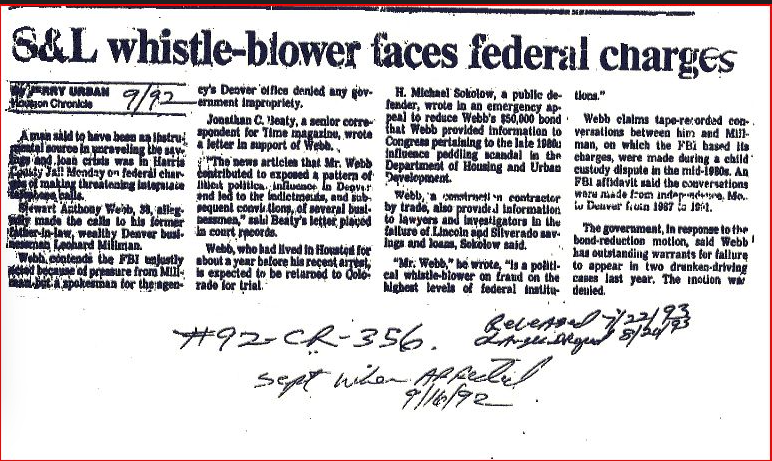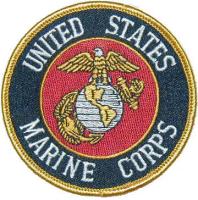
By Stew Webb Federal Whistleblower
RIP Super Spook NSA – CIA Otis Johnson Stone-R to death July 2017 by George HW Bush and his E-Systems Weststar Satellite’s a Department of Defense Contractor based in Dallas, Texas.
Super Spook Otis Johnson Maritime activities against the USSR
In 1973, SAD/SOG and the CIA’s Directorate of Science and Technology built and deployed the USNS Glomar Explorer (T-AG-193), a large deep-sea salvage ship, on a secret operation. This operation was called Project Azorian (erroneously called Project Jennifer by the press).[63] Her mission was to recover a sunken Soviet submarine, K-129, which had been lost in April 1968.[64][65] A mechanical failure caused two-thirds of the submarine to break off during recovery,[63] but SAD recovered two nuclear-tipped torpedoes, cryptographic machines and the bodies of six Soviet submariners.[66] An alternative theory claims that all of K-129 was recovered[67] and that the official account was an “elaborate cover-up”.[68]
Also in the 1970s, the U.S. Navy, the National Security Agency (NSA) and SAD/SOG [69] conducted Operation Ivy Bells and a series of other missions to place wire taps on Soviet underwater communications cables. These operations were covered in detail in the 1998 book Blind Man’s Bluff: The Untold Story of American Submarine Espionage.[70] In the 1985 edition of “Studies in Intelligence”, the CIA’s in-house journal that outsiders rarely get to see, the CIA describes the “staggering expense and improbable engineering feats” that culminated in the August 1974 mission.[71]
Intelligence in Public Literature
The Glomar Explorer in Film and Print
AZORIAN: The Raising of the K-129, written, directed, and produced by Michael White (Michael White Films, 2009).
Project AZORIAN: The CIA and the Raising of the K-129, by Norman Polmar and Michael White (Annapolis, MD: Naval Institute Press, 2010), 239 pages.
Reviewed by David Robarge
For years, CIA’s involvement with the Glomar Explorer project, the technologically path-breaking effort to use a specially designed ship to retrieve a sunken Soviet submarine from the Pacific Ocean floor in 1974, was one of the Agency’s most open secrets. Much information about the vessel, usually referred to simply as the Glomar, and its mission has been publicly available since they were exposed in the press in 1975. Confusion and inaccuracies quickly emerged, however, over how the wreck was located, how much of it was raised, what was found in it, and what the payoff of the costly project was.
The first book written on the topic established one of the most persistent errors by misnaming the project JENNIFER (the codename for its security procedures) rather than AZORIAN. 1 Later works—based on insider interviews, leaked documents, and speculations of varying reliability—revealed new information but still fell short of being authoritative. 2 More recent titles have postulated unlikely scenarios to explain why the Soviet submarine was where it was when it sank—a favorite is that it had “gone rogue” and was headed toward the United States to launch nuclear missiles—and what caused it to do so. 3 Meanwhile, no detailed official information about the Glomar program was publicly available until CIA declassified one of several internal accounts in 2010. 4
In the film AZORIAN and the companion book Project AZORIAN, military and intelligence historian Norman Polmar and documentarian Michael White have collaborated on the definitive accounts of this remarkable effort: using a battleship-sized, uniquely outfitted ship constructed under exceptionally tight security to salvage nuclear weapons and cryptographic equipment from a Soviet Golf-class submarine (the K-129) that sank in April 1968 approximately 1,500 miles northwest of Hawaii. It was the first strategic–missile submarine to have been lost and potentially had substantial intelligence value, but the odds against retrieving it seemed insurmountable. Before AZORIAN, the deepest ocean salvage of a ship was from 245 feet, and the only object known to have been recovered as far down as the K-129 lay was a satellite “bucket” weighing only several hundred pounds. The “target object,” as the submarine was euphemistically called then, was nearly 17,000 feet underwater and weighed 2,000 tons. “Project AZORIAN was unquestionably the most ambitious and the most audacious ocean engineering effort ever attempted,” Polmar and White rightly state. (xi)
In both the movie and the book, Polmar and White draw on a much wider range of sources than have previous chroniclers of the project, including the ship’s logs, a declassified CIA history, other documents from US and Soviet sources, and extensive interviews with members of the crews of the Glomar and other vessels involved and with US naval intelligence officers and Soviet naval officers and scientists. Polmar and White put these new sources to excellent effect, presenting numerous fascinating and hitherto unpublicized or underappreciated facts about the planning, implementation, and accomplishments of AZORIAN. Among the most interesting insights:
- The K-129 probably sank because the rocket engines in two of its missiles ignited sequentially for unknown reasons and burned for more than three minutes over a six-minute time span. The exhaust plumes would have burned into the pressure hull and, with their extremely high temperatures and poisonous fumes, quickly killed all the crew. The misfirings occurred while the submarine was near the surface, with its internal compartments open for ventilation. After part of its sail structure tore away and its bottom was breached, it began to flood and then sank. While investigating the cause of the K-129’s demise, Polmar and White refute alternative theories, such as a collision with or attack by a US nuclear submarine.
- The “acoustic events” that indicated something unusual had happened to the K-129 were identified not by the US Navy’s underwater SOSUS (Sound Surveillance System) array but by hydrophones monitored by the Air Force’s Technical Applications Center (AFTAC). SOSUS may have picked up the reverberations from the explosion, but they were unrecognizable to the operators because of their short duration. AFTAC’s recorders, originally deployed to detect Soviet nuclear detonations, were 10 times more sensitive than the SOSUS displays.
- To keep the project going after four years of development with costs mounting and no immediate end in sight, DCI Richard Helms had to overcome strong opposition from the chairman of the Joint Chiefs of Staff, the deputy secretary of defense, the chief of naval operations, and the director of the Defense Intelligence Agency, who argued on grounds of cost, intelligence return, and likely diplomatic repercussions that AZORIAN should be cancelled. In late 1972 the DCI persuaded National Security Advisor Henry Kissinger and President Richard Nixon to the contrary, and the program continued without further bureaucratic resistance. In April and May 1974, just as the last tests of the Glomar were completed and the salvage operation was about to begin, the US Intelligence Board gave a final favorable evaluation of the project. On 7 June the president approved the mission with the caveat that the recovery itself not begin before he returned from a visit to Moscow on 3 July.
- On its way from the East Coast to southern California after transiting the Strait of Magellan—the ship was too wide for the Panama Canal—the Glomar entered the port of Valparaiso, Chile, on 12 September 1973, one day after a military junta overthrew the socialist government of Salvadore Allende, which had been the target of one of CIA’s most notorious covert actions three years before. “Seven [Global Marine] technicians were to board the ship at Valparaiso. After checking in to their hotel, early on 11 September, the Global Marine personnel were awakened by the sounds of the revolution in the streets.” (85) The declassified Agency account of AZORIAN notes that “The presence of a covert US intelligence ship in a Chilean port during the military coup was a bizarre coincidence quite unrelated to the rumors that ‘the CIA had 200 agents in Chile for the sole purpose of ousting Allende.’ There were no unfavorable incidents involving the ship, crew members, or the Global Marine representative[s].”5
- If the Soviets had learned of the Glomar’s true mission and tried to disrupt the recovery, the ship would have been helpless because it had no protection within days of it. Ships of the Pacific Fleet were too far away to help unless warning of a threat to the Glomar came well in advance. If, as Polmar and White assert, submarines were sent to deal with a Soviet challenge and possible seizure of the Glomar, their “only option [upon arrival on the scene] would be to sink the lift ship….The men on board the Glomar knew nothing of this plan.” (106)
- Soviet ships started coming to the search area two weeks after the Glomar got there. The first was a missile range instrumentation ship, the Chazhma, whose crew took photographs from on deck and from a helicopter circling above the Glomar. The two ships exchanged messages, and the Chazhma left four days later. A Soviet naval tug, the SB-10, was more persistent, staying for nearly two weeks and coming as close as 200 yards.6 It was nearby just as the capture vehicle—the 179-foot-by-31-foot claw designed to grasp the submarine7—was about to be pulled inside, raising fears that debris from the retrieved wreckage might float up around the Glomar and reveal what was happening. Nothing like that occurred, and the tug left abruptly. The released CIA account notes, “One can only conjecture the reaction and chagrin of Soviet authorities when they later realized that two Soviet Navy ships were on the scene and, in effect, witnessed the recovery operation against their lost submarine.” 8
- The capture vehicle had been pulled up over 6,700 feet when two of its grabber arms snapped, causing nearly 100 feet of the retrieved front section of the K-129 to break away and fall through the gap created. Back to the ocean floor went the missile, its fire control system, and possibly some cryptographic equipment—one of the most coveted prizes in the whole operation. Engineers determined that the failure had two causes: an additional million pounds of weight had to placed on the pipe string and capture vehicle to drive the arms deeper into the bottom soil because the seafloor was harder than expected; and the steel used for the grabber devices, although stronger and tougher than other structural steels, also was brittle, especially at low temperatures like those encountered at great ocean depths.
- As if living its cover through and through, the Glomar brought up some manganese nodules along with part of the submarine. They apparently had lodged between the pressure hull and the outer hull as the K-129 slid down a slope after reaching bottom. Despite an “absolutely no souvenirs” order to the crew, some of the nodules disappeared.
- Many photographs, drawings, and CGI images and animation enliven the book and movie, adding sometimes startling visual impact to the narrative and helping explain the almost unfathomable complexity of the challenge the project engineers faced.
Polmar and White add a human touch to the technology-heavy AZORIAN story by giving details about the K-129’s crew and their living conditions aboard the vessel. Previous works about the Glomar often have gotten so caught up in engineering esoterica that, except for mentioning the retrieval of several bodies from the wreckage that were then buried at sea, readers might forget that many Soviet submariners perished in the mishap. The Soviet government told the crewmen’s families only that they had drowned accidentally and did not allow their names to be published for more than 25 years. The 10-page appendix in the book gives details about each of them and serves as a haunting reminder of the dangers faced in the undersea Cold War.
The descriptions of life aboard the Glomar also lighten the technical load of the story. The Glomar’s crew members got along well because of the comfortable living conditions and the camaraderie that developed around working together on a secret and historic mission. The Glomar was well outfitted with creature comforts: three recreation lounges with cards, games, color television sets, and videoplayers; an exercise room; a daily newspaper; and sumptuous food served four times a day, with the mess hall open around the clock. Polmar provides a menu on page 104 of the book.
While previous accounts have concentrated on the salvage operation itself, Polmar and White bring to the fore other important but overlooked aspects of the project. Among them was the construction of the world’s largest submersible barge, the HMB-1 (Hughes Mining Barge No. 1), to hide the construction of the capture vehicle. After the capture vehicle was assembled, the HMB-1 and its “cargo” were towed next to the ship in a cove along Catalina Island. The transfer of the capture vehicle to the Glomar occurred at night to discourage curious swimmers and divers. The Glomar maneuvered over the HMB-1, whose roof was opened so the capture vehicle could be pulled up into the moon pool. The ship then moved out of the cove, carrying the capture vehicle and some unexpected passengers: thousands of squid attracted by the lights.
One of the most remarkable aspects of Project AZORIAN is that it was conducted simultaneously in secret and in the open, and, even with a tip from an anonymous (and still unidentified) source, the Soviets evidently did not act because such an operation seemed technical unfeasible (67–68). The security regime held up for more than five years. Polmar and White note that AZORIAN
was carried out under intense press scrutiny because the ‘cover’ for the salvage was a seafloor-mining project sponsored by the notorious Howard Hughes. Thus, the salvage of the K-129, besides being of unprecedented scope and depth, was conducted in the public view and with intensive Soviet naval surveillance and with the Soviet embassy in Washington, DC, having been previously notified. (xii)
Polmar and White were unable to determine who came up with the idea of having Hughes “sponsor” the operation, but they rightly observe that “the Hughes empire was the perfect ‘front’ for the endeavor; it was a collection of privately owned corporations, not responsible to stockholders or to the Securities Exchange Commission.” Moreover, Hughes was known for undertaking exotic projects, such as building the enormous wooden aircraft dubbed the “Spruce Goose.”
AZORIAN was not compromised until February 1975, when the Los Angeles Times ran a story that the offices of a Hughes company (the Summa Corporation) that provided cover for the project had been broken into in June 1974 and a document about the Glomar stolen.9 Already dealing with the heartbreaking failure to retrieve all of the sunken submarine, beleaguered Director of Central Intelligence William Colby for several months had dissuaded members of the media from writing about the burglary, which they learned about from the Los Angeles Police Department. Then the Times published its somewhat garbled account (it had the operation occurring in the Atlantic Ocean, among other errors), and syndicated columnist Jack Anderson pieced together the full story, rejected a personal appeal from Colby to spike it, and broadcast it nationwide. A media frenzy quickly developed in southern California where the Glomar was berthed. AZORIAN’s deputy mission director recalled that
local, regional and national news reporters poured into the Long Beach area….Reporters frequented the Long Beach bars and tried all the arts and tricks of their trade to find knowledgeable sources and persuade them to talk. Waterfront hangers on were plied with drinks, and prostitutes were enlisted in attempts to buy crew lists. Crew members were pestered, badgered and propositioned.10
At the time, Anderson said he publicized the operation because “Navy experts have told us that the sunken sub contains no real secrets and that the project, therefore, is a waste of the taxpayers’ money.”11 Because of the leaks and the charges that AZORIAN had not been worth its great expense, the White House decided to kill Colby’s proposal for a second Glomar mission, codenamed MATADOR, to raise the portion of the submarine that had broken off.
Few shortcomings detract from Polmar and White’s authoritative two-part work. At times Polmar, the principal author of Project AZORIAN, tries too hard to display his expertise about warships and naval history. The third chapter, a “biography” of two submarines involved with AZORIAN, is superfluous, as are some of the appendices with detail about Soviet submarines and their operations. The book fails to mention the A-12 along with the U-2 and the SR-71 as one of the aeronautical achievements of the Lockheed “Skunk Works,” which built the capture vehicle. Cinematically, White’s movie is well produced and keeps the viewer’s attention. Some of the engineering sections drag a bit, but the segment in which participants revisit some key decisions shows some unintentionally amusing blame-passing.
A former US naval intelligence officer told Polmar and White that “AZORIAN was a great gamble, displaying the actions of a confident country with the wealth and the will to make such a gamble if the potential gain would make the effort worthwhile.” (171) Based on the intelligence acquired, was the AZORIAN gamble worth the cost? The arguments on either side are largely ex post facto because no one knows for sure what intelligence of what potential value was lost when only a part of the K-29 was recovered and MATADOR was cancelled. The Agency account concludes that “To attempt to evaluate Project AZORIAN in terms of costs and benefits, one must consider not only the immediate intelligence … but the broader aspects and achievements as well”—the development of “an advanced deep–ocean system with important future economic, political, and strategic potential for the United States.” 12
On the intelligence side, Polmar and White correctly assess that AZORIAN failed at its primary mission. After the second mission was scrubbed, the Glomar drifted from owner to owner for two decades, first with the US Navy’s Maritime Administration, then briefly with the Global Marine Development Corporation for deep sea drilling, then back to the Maritime Administration to spend 18 years laid up in a bay in California, and finally over to the GlobalSantaFe Corporation for 10 years of more deep-sea drilling. In 2007 that firm merged with Transocean, which bought the Glomar—renamed the GSF Explorer—from the US Government for $20 million. It now works under contract for oil companies on drilling projects around the world. “In a way,” Polmar and White aptly conclude, “the ship is performing the role for which she was originally publicized—exploiting the resources of the ocean floor.” (147)
Endnotes
1Clyde W. Burleson, The Jennifer Project (Englewood Cliffs, NJ: Prentice-Hall, 1977). Jennifer was the name of the daughter of a US Navy officer who suggested it as a cryptonym for AZORIAN’s security compartment. Polmar and White, 63. In his biography of DCI William Colby, John Prados compounds the error by saying that the overall project name Jennifer was later changed to Zodiac. Lost Crusader: The Secret Wars of CIA Director William Colby (New York: Oxford University Press, 2003), 267.
2Roy Varner and Wayne Collier, A Matter of Risk: The Incredible Story of the CIA’s Hughes Glomar Explorer Mission to Raise a Russian Submarine (New York: Random House, 1978); Sherry Sontag and Christopher Drew, Blind Man’s Bluff: The Untold Story of American Submarine Espionage (New York: Public Affairs, 1998).
3John P. Craven, The Silent War: The Cold War Battle Beneath the Sea (New York: Simon & Schuster, 2001); Kenneth Sewell and Clint Richmond, Red Star Rogue: The Untold Story of a Soviet Submarine’s Nuclear Strike Attempt on the U.S. (New York: Simon & Schuster, 2005); Viktor Dygalo, A Rear Admiral’s Notes (Moscow: Kuchkovo Pole, 2009); Peter A. Huchthausen and Alexandre Sheldon-Duplaix, Hide and Seek: The Untold Story of Cold War Naval Espionage (Hoboken, NJ: John Wiley & Sons, 2009); Craig W. Reed, Red November: Inside the Secret U.S.-Soviet Submarine War (New York: William Morrow, 2010).
4“Project AZORIAN: The Story of the Hughes Glomar Explorer,” Studies in Intelligence 22, No. 3 (Fall 1978): 1–50; declassified 2010. In the several years after the first media disclosures about the project in 1975, CIA acknowledged that it had used the Glomar for intelligence purposes and named the contractors involved in its construction but would release no other details. The “neither confirm nor deny” phrase the Agency uses when responding to document search requests has come to be known in information management parlance as the “Glomar response.” “Glomar Chronology-Releases,” 8 July 1999, copy in History Staff files.
5Global Marine, Inc., was the California-based firm that oversaw the construction of the Glomar—hence the ship’s name. “ Project AZORIAN,” 24.
6The SB-10 attracted the attention of the Glomar crew in part because its crew included two women who frequently appeared on deck wearing dresses that they traded daily. A project engineer recalled that “the Global Marine people had lots of fun” with the tug’s crew. “They would fill plastic trash bags with unclassified computer printouts that had to be disposed of anyway…[and] they would smear aqua lube over these papers—aqua lube [used on the threads of the three miles of pipes in the lift system] is the slipperiest substance known to man—stuff them into the plastic trash bag, tie it up, and throw it overboard. Sometimes they put a little acetylene in to make sure that it was buoyant…and it would skip across the waves as the wind took it….Whenever a bag of trash was thrown overboard, they would immediately go after it.” (112)
7The capture vehicle was nicknamed “Clementine.”
8Ibid., 46.
9The Glomar-related document apparently never left the building; a security guard found it and later destroyed it. (138)
10Harold R. Ford, William E. Colby as Director of Central Intelligence, 1973–1976 (Washington, DC: CIA Center for the Study of Intelligence, 1993; declassified 2011), 185. Colby focuses on the security and publicity aspects of AZORIAN, rather than the salvage effort, in his memoir. Honorable Men: My Life in the CIA (New York: Simon & Schuster, 1978), 413–18.
11Ford, 187.
12“Project AZORIAN,” 49.
All statements of fact, opinion, or analysis expressed in this article are those of the author. Nothing in the article should be construed as asserting or implying US government endorsement of an article’s factual statements and interpretations.
Posted: May 02, 2012 04:00 PM
Last Updated: May 02, 2012 04:00 PM
Raising Sunken Ships
http://www.pbs.org/saf/1305/features/ship2.htm
The Glomar Explorer
In 1968, a flurry of coded communications alerted the U.S. Navy to the loss of a Soviet Golf-class submarine, an older diesel vessel that had sunk in 17,000 feet of water about 750 miles northwest of Hawaii. U.S. Intelligence reports soon revealed that an explosion had occurred, probably while the sub was at the surface, but that it was mostly intact – and that it still carried nuclear missiles on board. A few years later the wealthy eccentric Howard Hughes constructed the Glomar Explorer, an enormous barge built for the ostensible purpose of mining manganese nodules from the ocean floor. Although manganese nodules are real, the mining venture was actually an elaborate hoax.
| The Glomar Explorer, built to retrieve a Soviet Golf-class submarine that was lost in 1968. |
In reality, the Glomar Explorer was built as part of an audacious CIA effort to retrieve the Golf. Codenamed “Project Jennifer,” the plan was to use a giant claw dangling on the end of a three-mile-long tether to grasp the submarine and raise it into a “moon pool” – a large area open to the sea – built inside the Glomar Explorer. The submarine would then be searched for Soviet codebooks, communications gear, and nuclear warheads.
The retrieval, begun in 1974, did not go smoothly. Trouble began when the claw (nicknamed “Clementine” by the crew) had been lowered almost within reach of the wreck of the Golf. While tantalizingly close to the submarine, the operators lost control, and the claw collided violently with the seabed. Inspection by remote camera showed no visible damage to the claw assembly, however, so the engineers decided to continue with the operation. The claw was lowered the final few feet, and found purchase around the hull of the wreck. The slow, methodical process of bringing the Golf to the surface began, and the success of the salvage effort was apparently in sight, despite the earlier mistake.
Hours later, when the submarine was about two miles below the surface, disaster struck. The impact of Clementine with the ocean bottom had seriously weakened the claw assembly. Three of the five tines that carried the load in the claw suddenly broke off, leaving most of the 5000-ton Golf unsupported. Unable to take the strain, the submarine tore apart under its own weight, most of it plunging back into the depths – but not before spilling a missile from an open missile bay.
Tense moments passed onboard the Glomar Explorer, as the crew steeled themselves for the nuclear explosion that many expected when the lost warhead smashed into the ocean floor. The explosion never came. Only a small part of the forward section of the submarine that remained in the grasp of the claw could be brought to the surface. This section contained little of interest to the CIA, but found among the wreckage were the remains of six Soviet sailors. They were given a solemn burial at sea by the crew of the Glomar Explorer, the ceremony performed in Russian.
http://en.wikipedia.org/wiki/GSF_Explorer
Your kind Contributions are very much appreciated thank you. – Stew Webb












.jpg)

